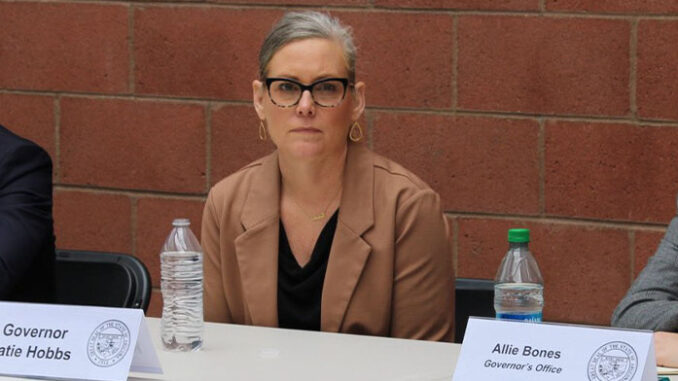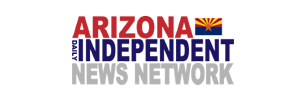
On Monday morning, the resignation of Governor Katie Hobbs’ Deputy Director of Public Affairs, Rebecca Beebe, appeared to signal the coming of a civil war between Arizona Democrats sparked by the Governor’s budget. Beebe, who also served as Hobbs’ Legislative Director, resigned rather than try to sell the Democrats in the Legislature on a budget that did not include an anticipated attack on school choice.
I'm not sure it is about people not wanting to answer to Gov #Hobbs as much as not liking answering to whoever is actually running the show up on the 9th floor. I mean they're not even six months into the gig, so something odd is going on. Will we ever find out who is in charge? https://t.co/7IqNvOAnMG
— Constantin Querard (@CQuerard) May 8, 2023
The resignation filled social media to the delight of conservatives.
Hobbs ignored calls from her fellow Democrats and the teachers’ union to include in her budget a cap on Arizona’s school choice program known as the Empowerment Scholarship Account (ESA) program. Democrats have been insisting, contrary to any available evidence, that the ESA program will bankrupt the state. Contrary to their claims however, the ESA program costs state taxpayers less per student than traditional public schools do.
We must cap universal ESA vouchers in the upcoming budget. They now threaten to bankrupt AZ. We need to fight the fentanyl crisis; protect our children; combat elder abuse; fund our secure & safe elections, and deal with the homelessness, housing, teacher & water crises.
— Representative Judy Schwiebert, AZ House LD2 (@JudyForAZ) May 8, 2023
During her campaign for governor, Hobbs also claimed that the Empowerment Scholarship Account program expansion, which was created through a bill sponsored by Speaker of the House Ben Toma and passed last year, was “going to bankrupt our state…”
She claimed that “many independent analyses have shown that, and we’re not calling for a repeal of the entire program we’re only calling for a repeal of the expansion.”
However, according to a Goldwater Institute study, private education may actually be helping to keep public school funding afloat. The report How Private Education Can Help Funding for Public School Students found, “A robust landscape of private education is linked not to the financial hollowing of states’ public K-12 sectors, but rather to increased levels of public school per pupil funding.”
A study by the Common Sense Institute after the expansion found:
- Public school enrollment experienced significant declines during the pandemic period and is now more than 70,000 students below FY2019 budget projections. This enrollment decline generates over $500 million in annual statewide savings.
- Based on current data, the increase in annual ESA program costs attributable to universal eligibility is $197.9 million. Existing program costs add another approximately $179 million, for a total cost of about $377 million. While the cost of the ESA’s program under universal eligibility exceeds the additional $33 million initially appropriated by the Legislature, the Arizona Department of Education likely has sufficient excess funding to more than cover the difference, due to continued post-pandemic enrollment declines. CSI estimates that, as of quarter 1, ADE data suggest an $8 million end-of-year Agency General Fund budget surplus, given system-wide enrollment trends.
- Although it is increasingly unlikely that student enrollment will return to pre-pandemic levels, State policymakers have continued to fund the statewide K-12 funding formula as though it will. This has resulted in massive state General Fund surpluses ($389 million last fiscal year alone – or enough to pay for more than 33,000 Empowerment Scholarship Accounts) and will help support ESA cost growth. This analysis does not contemplate additional local funding and other fund savings from these enrollment declines.
- Based on data from the first quarter, ADE likely has sufficient General Fund appropriations to cover the costs of ESAs within its existing budget. ESA program cost growth should be considered within a broader trend in changing parent behavior and student enrollment after 2020, and the implications of those choices on public expenditures.
RELATED ARTICLE:
